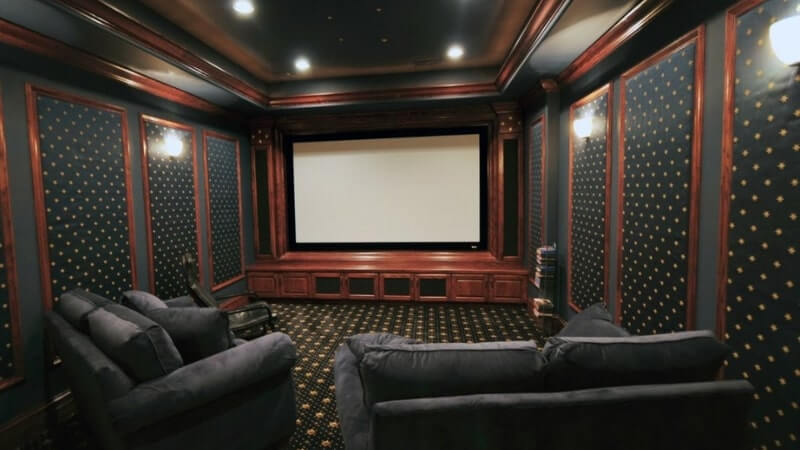Professional Tips From Experts On Soundproofing in your home and office- Have you been wondering how you can better manage the sound in your space either for professional purposes or for leisure listening? Well, you are in luck because today in this article, we will be looking at this issue and providing some tips that will serve you in different situations.
At the end of this article, you would have gotten a better understanding of acoustics in general and so be able to fully define your needs and also address them using the tips we will share here.
Table of Contents
Why You May Need Soundproofing
There are different reasons why you may need either soundproofing or acoustic treatment. We will look at a few examples so you can identify which fits your scenario best.
Professional Settings (Audio/Visual Production Studio)
Proper management of sound waves is required in most professional production studios. For audio production, it is important to create a listening environment that has a flat response, not enhancing or reducing any frequency range. To this end, problems like standing waves and flutter echoes have to be properly dealt with.
Aside from what we described above which is acoustic treatment, a studio may also what to achieve isolation, in which case noise from outside cannot be heard within the studio and the music being played therein can also not be heard outside.
Home Theater

If you have a dedicated space where you watch movies and television in general, you may want to create the right ambience and a space that does not exaggerate any frequency range but delivers the correct audio reproduction to every part of the room. This is almost the same thing as with the professional studio requirement.
Office and Work Space
Most offices try to reduce external noise as much as possible. Of course, too much noise can affect the level of productivity. To this end, it may be necessary to reduce how much noise can get into the space so as to create a cool and comfortable environment for the staff.
Sound-Deadening
There are equipment that we use that naturally make a lot of noise. An example is a power generator. To ensure that you can enjoy the services of the equipment without the attendant noise, you may want to soundproof or deaden the sound.
Professional Tips From Experts On Soundproofing

Based on everything we have looked at above, you may have begun to deduce that there are two parts to this subject. We have mentioned acoustic treatment and we have also mentioned soundproofing and isolation.
While isolation and soundproofing refer to the same thing, acoustic treatment is a different thing entirely. You can learn more about it here. We will go ahead to provide tips for achieving the two.
Acoustic Treatment
Like we mentioned above, this is something that is necessary in production studios, home theaters and other spaces where a professional or controlled listening environment is required. There are two important things that need to be addressed here. The first is flutter echoes and the second is standing waves.
Flutter echo is a result of sound waves bounding back and forth between parallel lines. This causes multiple repetitions of sound which can hamper the quality of listening that can be done in an environment. To prevent this, the following can be done:
- Use acoustic foams to absorb some of the audio waves between parallel surfaces, thereby reducing the echoes.
- Use studio panels to achieve the same thing as with the foams. Panels can also double as decorative pieces. This will be ideal in spaces like home theaters, office spaces and other such residential or commercial spaces where flutter echoes need to be cut down.
- Scatter waves from parallel walls with the use of diffusers. This provides a surface that is textured to throw the incident waves in different directions so the majority of them do not head back to the point from which they are coming.
For standing waves, which is the result of an overlaying of the secondary wave over the primary wave, causing an amplification of the peak amplitude, the solution is to disrupt this flow. If this is not addressed, you will have an exaggeration of certain frequencies at certain areas in the room.
To address this, install bass traps along all the corners in the room.
A combination of the tips given above is required to achieve an acoustically well-treated room.
Soundproofing
This is an entirely different ball game from what we discussed above. This has to do with attempts at either drastically reducing the volume of the sound entering or exiting a space or ensuring that sound cannot be transmitted into or from the space at all.
This kind of treatment is usually required in locations like professional music production studios (in addition to acoustic treatment), factories with very loud machinery, homes or offices with loud equipment and other places where noise levels really need to be managed.
The strategy here is simply to ensure that any means through which sound can come in or escape is plugged. Sound travels through practically every medium though the rate at which it will travel will differ from medium to medium depending on the medium’s NRC (Noise Reduction Coefficient) rating.
To achieve soundproofing, the following techniques can be used. Note that the level of success desired will determine what technique to use and of course how expensive it will be.
Decoupling
If you are looking for one method that will provide you with the highest level of soundproofing then you should be looking at this option. This method operates on the principle that sound cannot travel in a vacuum. If you can therefore create a vacuum (as much as possible) around a space or location, you will achieve 0 sound transmission.
One way to achieve this in a building is to build a room in a room. What this means is that you have two walls or two barriers on each side. The space between the walls or barriers creates the vacuum through which sound cannot travel. Of course this will require professional execution and will cost way more than any other options out there.
Sealing All Openings
It is imperative that all openings be thoroughly sealed. These include window and door edges. Once shut, there should not be leaks along any of the edges. You can achieve this using automatic sealing arms for doors, sealants, sealing gaskets and other such methods.
Acoustic Coatings
In addition to the above, the walls, doors, and windows, which can all also transmit sound in varying degrees, need to be coated with materials that will reduce or even prevent the transmission of sound through them. You can do this using various types of acoustic coatings. A good example is Mass Loaded Vinyl.
Conclusion
A lot of the different methods listed above work hand in hand. If you have a complex acoustic need, talk with a professional so you can receive expert guidance and even help with the execution of whatever methods are best for achieving your goal.







